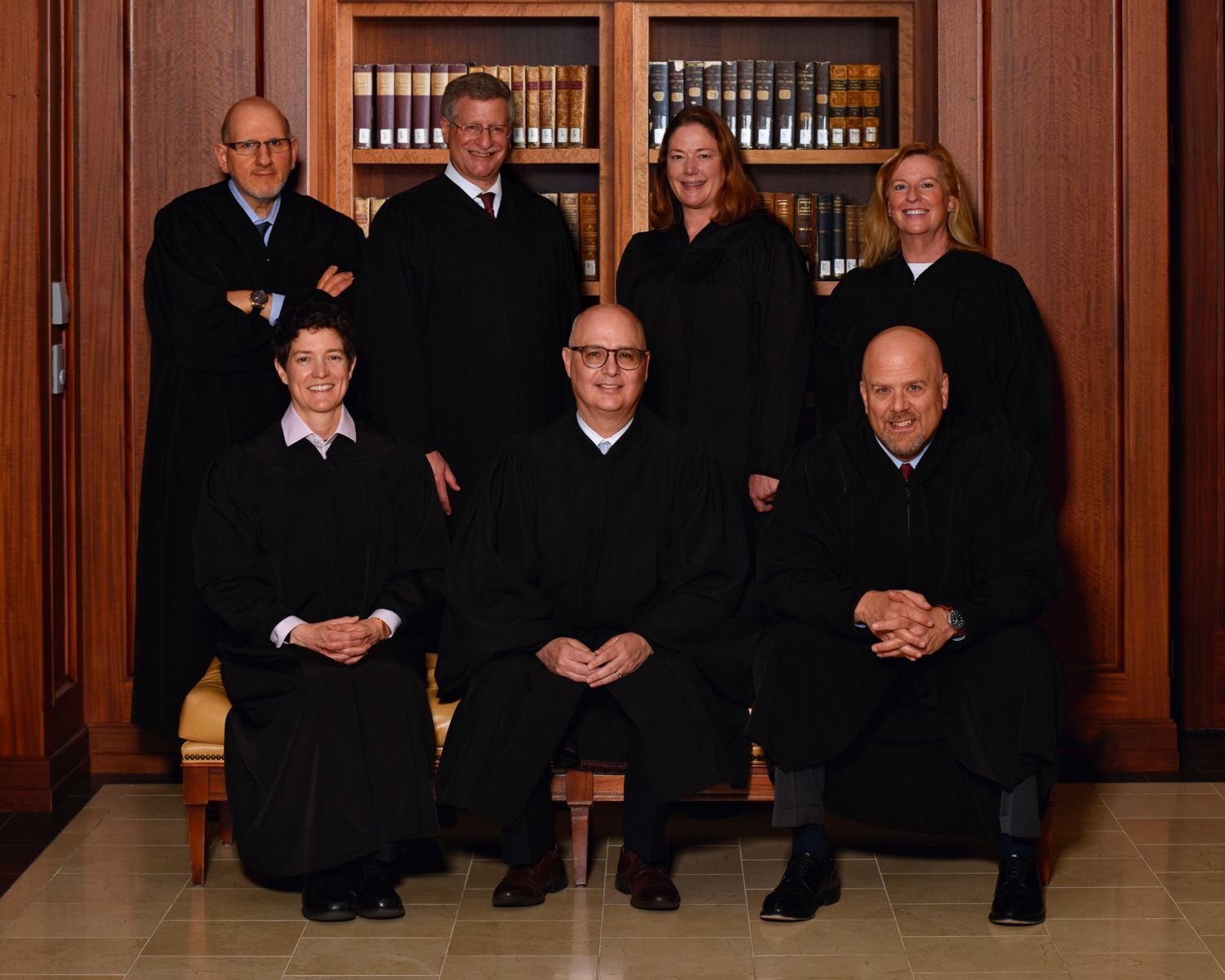State Supreme Court accepts appeals on DIA noise, thwarted bike theft

The Colorado Supreme Court agreed this week to hear two cases on appeal, involving Denver’s liability for noise violations at Denver International Airport as well as a Boulder thief’s role in damaging his victim’s car.
Two other cases fell just short of the threshold for accepting an appeal, which requires agreement from three out of the seven justices. In each instance, two members of the court would have granted a review of criminal appeals involving threats to a judge and the meaning of “serious bodily injury.”
Finally, the court revised its rules to incorporate legal counsel for older children into welfare proceedings, a response to legislation enacted earlier this year.
Feud over airport noise
In 1988, the City and County of Denver and Adams County signed an agreement in anticipation of building Denver International Airport. Part of the agreement included noise limits over certain parts of Adams County. For major noise issues, Denver would pay the county $500,000 per unaddressed violation.
Denver initially planned to use a modeling system for noise known as ARTSMAP. But Adams County filed a lawsuit in 1992 wanting Denver to actually monitor noise, instead of simply modeling it. As a result, Denver installed another system, ANOMS, to perform the monitoring. Although there were slight variations in the sound measurements between the two systems, it initially appeared the differences in data were growing smaller.
However, in 2014 Denver provided Adams County with a “noise climate report.” For roughly a decade, Denver had only been providing ARTSMAP modeling data for noise levels. But Adams County realized the ANOMS data were no longer showing a slight discrepancy. In fact, the actual noise levels were now far higher than the modeled levels – a difference of 20 decibels compared with one to three decibels in the late 1990s.
Adams County and several of its municipalities sued Denver again for breach of contract. After a 2019 trial, a Jefferson County judge determined Denver’s use of ARTSMAP did not comply with the 1988 agreement. She found Denver owed the plaintiffs damages for 67 noise violations between 2014 and 2016.
Denver appealed, invoking several procedural defenses to the plaintiffs’ allegations. In particular, Denver argued the statute of limitations had expired on the county’s claims. Because Adams County had known in the mid-1990s that Denver was using ARTSMAP for noise modeling, the 2014 lawsuit was filed well beyond the legal deadline, the city argued.
But in March of this year, a three-judge panel for the Court of Appeals disagreed, noting the same breadth of noise violations did not exist for Adams County in the 1990s.
“It was not until 2014, when Adams received the Noise Climate Report, that Adams first knew of any damages flowing from Denver’s use of ARTSMAP, thereby providing it with the ‘certainty of harm and incentive to sue’,” wrote Judge Rebecca R. Freyre for the panel.
Denver then appealed to the Supreme Court, arguing Colorado law does not permit parties to wait until there is a “financial advantage to filing suit.” Adams County and its municipalities defended the Court of Appeals’ decision, accusing Denver of deliberately concealing the noise data for years.
The Supreme Court has agreed to review whether the appellate panel correctly decided the plaintiffs were allowed to wait until there was an “incentive to sue” before taking action against Denver.
The case is City and County of Denver v. Board of County Commissioners et al.
Stop, thief
Arnold Roman Martinez was riding away with a $6,000 bicycle he stole from a Boulder couple’s home when the husband got in his car to give chase. The man caught up with Martinez and pulled his vehicle in front of him, causing Martinez to crash the bicycle into the car. Martinez then fled the scene.
As part of Martinez’s plea agreement, he committed to paying restitution for the damage he caused. The prosecution sought $2,393.84 from Martinez for the damage to the victim’s car. Of that amount, $500 was for the victim’s insurance deductible and the remainder would go to the insurance company, GEICO.
On appeal, Martinez contended GEICO could not also be a “victim” under the state’s restitution law. Further, he pointed out the restitution law only obligates perpetrators to pay for damages caused by their conduct. Because the victim had pulled his car in front of Martinez, prompting him to crash into the car, the victim’s own behavior caused the damage, Martinez argued.
On both issues, Court of Appeals rejected Martinez’s line of thinking, and concluded the victim’s attempt to stop the theft was a natural result of Martinez’s actions.
“It defies logic to claim that, once the victim’s car was parallel to Martinez, the victim would simply back off and allow Martinez to speed away on the victim’s $6,000 bicycle,” wrote Judge Lino S. Lipinsky de Orlov in March of this year. “And it further defies logic to assert that, upon catching up with the fleeing thief, the victim would intentionally damage his own property.”
In his appeal to the Supreme Court, Martinez warned the Court of Appeals’ decision creates an incentive for victims to undertake “dangerous acts of self-help” when recovering their property.
The Supreme Court will answer whether Boulder County prosecutors proved Martinez’s actions caused the vehicle damage and, consequently, obligated him to pay restitution.
The case is Martinez v. People.
‘Let me kidnap your daughter’
Adams County removed a newborn from the custody of her parents after learning there was methamphetamine in her umbilical cord. The father, Adrian Jeremiah Brown, quickly became upset and aggressive toward the caseworker and medical staff, and his belligerence continued throughout the welfare proceedings.
At one point, he characterized county personnel as “kidnappers” and “terrorists.”
The judge overseeing Brown’s case ordered a domestic violence evaluation after Brown allegedly threatened to kill his child’s mother. When Brown exploded at the judge, she explained she felt the need to at least have him participate in anger management.
“Let me kidnap your daughter and see if you don’t get angry,” Brown retorted. “As a matter of fact, where do you live, your honor? Let’s see if we can get this all resolved. See if you would be angry.”
Prosecutors subsequently charged Brown with retaliating against a judge by making a “credible threat” against the unnamed judge in his case. She testified at Brown’s trial that she became more protective of her children and modified her own routine because she was fearful of Brown. A jury found him guilty and Brown received five years in prison.
Brown argued on appeal that his kidnapping statement amounted to speech protected by the U.S. Constitution. By 2-1, the Court of Appeals was unconvinced.
“The statement is not posing a hypothetical action by an unknown or unnamed party, but a concrete active proposal by the speaker,” wrote Judge James S. Casebolt in concluding Brown had communicated a threat that lacked constitutional protection.
Lipinsky, writing in dissent, believed Brown’s statement did not intend to convey he was about to kidnap the judge’s child, but was an illustration of how angry he felt after losing custody of his daughter.
“Brown was saying that the judge, too, would become angered if someone took her daughter away. He became frustrated when the judge said he needed an anger management assessment because, in his mind, any parent would feel anger if a child was taken away,” Lipinsky wrote.
The Supreme Court declined to hear Brown’s case. However, Justices William W. Hood III and Melissa Hart indicated they would have decided whether the appellate panel correctly applied the legal test for determining when something is a threat and when it is constitutionally-protected speech.
The case is Brown v. People.
Serious bodily injury
In its 1982 decision of Stroup v. People, the Supreme Court interpreted “serious bodily injury” under Colorado law to refer to the actual harm a victim suffers from an assailant – as opposed to a type of injury that could cause a substantial risk of death, but is not deadly in a victim’s particular case.
Decades later, an Arapahoe County jury convicted Scott Michael Bowers for first degree assault involving serious bodily injury. Prosecutors showed Bowers had strangled his girlfriend after she returned home intoxicated. A doctor informed police at the time that the victim had suffered a serious bodily injury that involved a risk of death.
Expert testimony at trial also suggested the victim’s symptoms in the hospital were a product of oxygen deprivation to her brain caused by the strangulation. Bowers conceded he and the victim were involved in an altercation, but insisted he never strangled her.
On appeal, Bowers argued the victim’s injuries – specifically, bruises on her neck – did not amount to serious bodily injury.
The Court of Appeals believed the Stroup decision did not dictate the answer for Bowers because the legislature had since altered the serious bodily injury law. Nevertheless, the court upheld Bowers’ conviction. It explained the victim’s bruises were not themselves a serious bodily injury, but were instead evidence of the serious bodily injury the victim’s doctor had told police about.
But in 2021, the Supreme Court reaffirmed that its conclusion in Stroup was still valid, even with the changes to the law. It returned Bowers’ case to the Court of Appeals for a second look.
The appellate court stood by its prior conclusion that Bowers, as corroborated by the doctor, had created a substantial risk of death by depriving the victim’s brain of oxygen. Then, midway through the opinion, the panel observed that “strangulation generally describes both the conduct perpetrated by defendant and the injury suffered by the victim.”
In Bowers’ second appeal to the Supreme Court, he argued the appellate court had blurred the line on strangulation by calling it both the conduct and the injury. Because a serious bodily injury is a function of the victim’s actual harm, and not the nature of the defendant’s actions, Bowers believed the Court of Appeals had opened the door to wrongful findings of serious bodily injury.
Under the Court of Appeals’ logic, “if strangulation occurred, then the prosecution has necessarily proven serious bodily injury. Yet we know that not every strangulation causes a serious bodily injury,” wrote Deputy State Public Defender Meredith O’Harris to the Supreme Court.
Although the court turned down Bowers’ appeal, Hart and Justice Richard L. Gabriel indicated they would have accepted the case to scrutinize the Court of Appeals’ characterization of strangulation.
The case is Bowers v. People.
Rule change in welfare cases
Earlier this year, the General Assembly clarified that children 12 years or older are required to have client-directed legal representation in welfare proceedings. Consequently, the Supreme Court on Oct. 13 updated its rules governing jury trials in such cases, recognizing the new category of “counsel for youth.”









